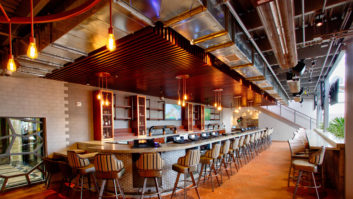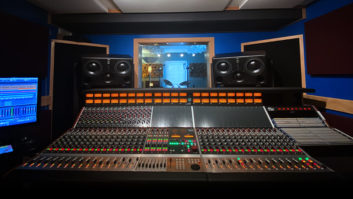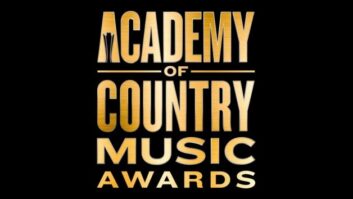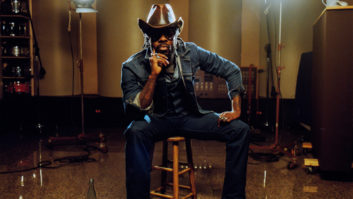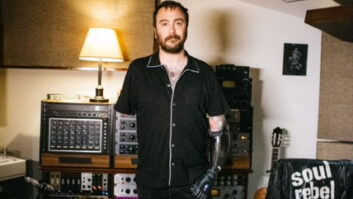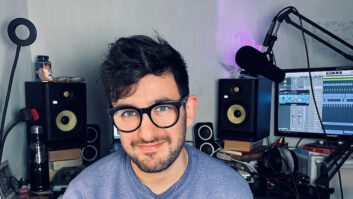It is difficult to imagine what popular music in the latter half of the 20th century would have sounded like if the electric guitar had never been invented. There would have been no Les Paul or Jimi Hendrix, no Nashville cats or British Invasion, and Bob Dylan would never have been able to “go electric.” In fact, the electric guitar might be seen as the principal totem of popular culture, with millions of enthusiastic fans playing “air guitar” worldwide. Given the omnipresence of the instrument, it naturally follows that recording engineers and producers get lots of opportunities to record and mix the “six-string.” We checked in with three engineers-Joe Ferla, David Singleton and Kevin Shirley-to see how they do it.
JOE FERLAJoe Ferla, a 1995 TEC Award nominee, has engineered or produced hundreds of albums, including nearly a dozen that have reached the Top 10 on Billboard’s jazz and pop charts. He’s also engineered numerous soundtracks, and live radio broadcasts from Electric Lady Studios. His work spans all music genres, but his specialty is recording jazz artists, among them guitarists Bill Frisell, John Scofield, James Blood Ulmer, Bobby Previte, Charlie Hunter and Pat Metheny.
What is your general philosophy of recording electric guitar?
Let’s assume for the purposes of this discussion that we’re starting with a good guitarist, with a good instrument and a good sound at the amplifier. Otherwise, there’s nothing I can do in the control room to get a good sound. I can improve upon it, but I can’t get a really great guitar sound. The first thing that I do, whether it’s with a guitar or another instrument, is go out and listen to the source. You don’t want to hear something for the first time after it has passed through a microphone, a mic cable, a fader and a pair of speakers. If there’s a really killer sound coming out of the amplifier, I’ll do whatever I have to do to capture that sound.
I have maybe six different ways to record electric guitar. It changes based on who is playing, what kind of music it is, and what mood I’m in that day. Sometimes I use a Beyer M88 mic through a Telefunken V76 mic preamp, to a compressor or a limiter-an LA2A, an 1176 or a Fairchild. I recently used this combination on a rock band with big, distorted, loud guitars, and I was able to capture that sound. An alternative combination is a U67 through the Telefunken and a Fairchild limiter. That’s a real retro sound-all tubes-from the ’60s. Another technique, which I’ve used on most of the Bill Frisell records I’ve recorded, is Neumann KM84s through old Neve mic preamps, and LA2As.
Speaking of Bill Frisell, last year you recorded him playing with Pat Metheny on Marc Johnson’s The Sound of Summer Running CD. Did you record the two guitarists differently?
Absolutely. Pat Metheny and Bill Frisell are very different, not only in terms of their styles but sonically. Pat’s got a very midrange sound, produced using four speaker cabinets arranged in an arc. Rather than miking each cabinet individually, we placed two mics a few feet away in an X/Y stereo pattern. I believe that Bill only used one amplifier on that session, though sometimes he uses two for stereo. He uses one or two effects processors connected directly to the amp and gets a beautiful and pristine sound, which I capture using the KM84s. The KM84 is one of the flatter condenser mics that Neumann has made, without the peak of a U87 and with a better bottom end. It’s very smooth and warm-sounding.
What other techniques do you use?
Another technique is to combine two mics, like an SM57 and an M88. The SM57 has that midrange brightness to it, and the M88 has a fatter sound. I just make sure they’re in phase and mix and match instead of using EQ. Yet another technique is putting a mic close to an amplifier, right on the cone, and another two or three feet away.
Do you ever use room mics?
Usually I don’t record guitars with room mics because it isn’t appropriate for many of the kinds of music I do.
Do you record the different mics onto discrete tracks, or blend them going to tape?
I mix the mic combinations together in mono or stereo, depending on the circumstances, rather than on discrete tracks. I’ll commit to a sound that I get because when I’m recording I’m always thinking about mixing, and I’ve always got a monitor mix that I think is representative of what the record is ultimately going to sound like. I like to tweak my reverbs and get a good balance. When I’m getting sounds on an instrument, I tailor them to where I think they should sit in the mix, which makes it easier to commit to combinations of mics.
Do you print the monitor mix effects to tape?
I never print reverb or other effects that I have added in the control room. If the guitarist is using an effect, or a spring reverb, I print that to tape. I always try to get the desired sound using microphones rather than EQ or control room effects. I’ll change a microphone before I’ll pop an equalizer in. I do a lot of running between the studio and the control room. The bottom line is that after changing mics a few times, if I can’t get the sound without processing I’ll put it in; but I want to make sure that I’ve done the best job that I can do with the microphones and the placement. The placement of a mic can really change things.
So you just switch mics until you get the right sound?
I think a lot about the session ahead of time, and I have a feeling about it before I begin. If I’m in a Beyer M88 mood that day, I’ll set it up, but if it’s not working out I’ll change it quickly. I try to do at least one new thing on each session, but if it doesn’t work I’ll go back to what I know will work. I like to experiment a little bit and push the envelope just as far as I can rather than do the same things every day. Trying things that I’ve never tried before helps to keep me on top of things.
Can you give me a couple of examples?
I used a Coles ribbon mic while recording John Scofield. It’s not a likely choice for electric guitar, but its a pretty fat-sounding mic, and it worked quite well on that occasion. Another example, also used on a Scofield recording, was setting up a Twin Reverb in the mix room and using its spring reverb as an outboard processor.
Are there any particular processors you like to use while mixing?
I try to get what I need on tape, but sometimes I add compression or peak limiting to let the guitar speak, and to hear everything that the guitarist is doing. I’ll also add a touch of EQ if a guitar needs to be brightened up a bit to cut through an arrangement, or the opposite if it needs to be fattened up, and some additional reverb. But no real tricks for me in that sense. I’m pretty much a purist.
Do you prefer recording to analog or digital?
Analog! There’s no comparison. It’s smoother, and you get tape compression. I think I hear overtones and harmonics more on analog than on digital. I think there are frequencies that we can’t hear, that affect the sound of the frequencies that we can hear. Digital, which cuts off at 20 kHz, doesn’t get it. Analog may roll off and not be as flat, but there is something above 20 kHz happening. Analog has more texture and nuance and is more realistic. You can almost reach out and touch the instrument when it’s being played off an analog tape. Also, these new tape formulas are pretty good. I really like the new BASF 900 at +9 dB, running at 30 ips. Most of what I do is done that way.
Anything more to add?
I’ve also used 414s on electric guitars, and that’s a nice sound, too.
DAVID SINGLETONDavid Singleton has been Robert Fripp’s engineer since 1989, during which time he has recorded and mixed Fripp in a variety of contexts, including the current “double trio” version of King Crimson. Singleton has also recorded ProjeKct Four, the California Guitar Trio, the Europa String Choir and Tony Geballe, as well as remixed and mastered several historic live Crimson recordings. We caught up with him at the UK offices of Discipline Mobile Global.
What is your general philosophy of recording electric guitar?
Recently, I have been recording totally DI. In fact, a lot of Robert Fripp’s new sounds are produced using a Roland VG-8 routed to one or more rack effects processors, so they don’t originate from an amplifier. Back in 1989, Robert adopted DI recording in principle, but at that time his main processor was a Zoom, which was not adequate. It’s only recently that the technology has caught up and the processors sound good enough to justify using them without an amp. Robert was using a Roland GP100 preamp, along with an Eventide H3000 and some other processors, but more recently he’s been using the TC Electronic G-Force and a new TC unit. We used a TC preamp/processor while recording ProjeKct Four, and the DI sounds were totally convincing.
Robert has a great interest in stereo placement, so even back when we were recording a single amp we attempted to create a stereo sound. A stereo effect can be created by miking both the front and the back of the speaker cabinet, with the phase reversed on the rear mic. The one in front naturally gives you a sense of where the guitar is, so if it’s on the left and the other is on the right, the guitar will sound as if it’s toward the left. It gives you a much more present and genuine sound. In fact, the phase confusion is actually helpful. Later, when King Crimson did Thrak, Robert’s sounds were generated from his rack and DI’d, but then the stereo sound was sent to a pair of Vox AC30s, which were miked up and the sounds were merged. We did it mostly to create air. Somehow a sound that moved air just felt better.
Did you place the mics close to the cabinets or try to capture some of the room sound?
We didn’t record the sound of the room with an ambient mic, but the mics were a few feet away from the speakers. At Real World [where Thrak was recorded] we used Neumanns, though I usually use Shure SM57s.
Do you use much processing in the mixing stage?
No, not a great deal, particularly on more recent recordings. That’s mostly because the processors have been getting better over the last few years. Even as recently as two years ago, digital effects processors were less successful and tended to need help, so we then either EQ’d them or added more processing to make them more successful. For us, panning is probably more critical during mixing than effects processing. Robert gives very careful consideration to how the guitars are panned, and to a certain extent the panning comes first, before moving on to EQ and level. In the ’80s King Crimson, Robert and Adrian Belew’s interlocking guitars both had stereo signals, and they were typically panned one of two ways. Usually one would be panned hard left and about half-right [3 o’clock], and the other panned hard right and about half-left [9 o’clock]. They met in the stereo field, with each going beyond the center. Other times they were panned almost, but not entirely, hard left and right.
What about cabinet emulators?
Robert uses the onboard emulators in the processors. In fact, when going back to some older tracks that were not printed all that well to tape, we used just the cabinet emulations in the GP100 to improve the sound. A lot of the time what they’re doing is really an EQ function, but we used them quite successfully when we were processing live recordings of King Crimson shows circa 1984, when both guitars were recorded fairly poorly.
In the studio, do you record to analog or digital or both?
Both. For King Crimson we usually record to 2-inch with Dolby SR; that’s our favorite. I think that analog tape helps when you are using a lot of these digital guitar sounds.
By overdriving it a little to get tape compression?
That’s right. The digital guitar sound recorded to an ADAT is much less satisfactory.
Anything else?
Things have actually become a bit boring for me using the DI approach, but these things tend to go in phases. For example, Adrian Belew is currently going in the opposite direction and using digital amps that allow you to preset lots of different sounds within the amp. So, there’s sure to be more fun around the corner.
KEVIN SHIRLEYKevin “Caveman” Shirley’s many production and engineering credits include Aerosmith (Nine Lives), Journey (Trial by Fire), Dream Theatre (Falling Into Infinity, Once in a Livetime), Silverchair (Frogstomp) and the Black Crowes (By Your Side). Shirley describes himself as “definitely old-school rock” when it comes to recording, preferring to have everyone play live at the same time. We reached him at Avatar Studios in New York, where he spends much of his time.
Do you have a general philosophy for recording electric guitar?
The source is the most important element in the guitar sound, so there has to be a good sound coming out of the amplifier. After that, the recording procedure for me is simply capturing that sound. Microphones these days are designed to capture sonics as accurately as possible, so all you need to do is put a mic up in front of the amp and the rest of it should be a piece of cake.
Do you ever record guitar directly without an amplifier?
No, I don’t do any direct recording. Actually, it’s not true that I haven’t done any direct recording; when I did Journey’s Trial by Fire, Neal [Schon] recorded all of his parts direct using a Marshall tube preamp. But Neal’s got a different sound, a more processed sound.
How about room mics?
I like the sound coming directly out of the amplifier, and I like it to be as up-front as possible. Too much room sound can make a guitar sound sort of cloudy and less well-defined.
Do you have any favorite mics?
I always use a Shure SM57 and a Beyer M201 in a 90-degree position. The Beyer has more bottom end, and the 57 has a nice, crisp top. I just balance them up, making sure that the phase is perfect, then I give them a little compression, usually with an 1176. If I need to tweak the EQ at all I’ll use a Drawmer 1961 tube equalizer.
Do you print effects?
I think that if a guitarist is going to use effects they should go through the amp and be recorded as part of the sound. I don’t print any additional effects that don’t originate at the amplifier.
Do you employ track doubling or any other special tracking or mixing techniques?
It depends on the band. I really like that AC/DC style of tracking, where you have two distinctly different guitars on each side; I really love that. I’m mixing a Little Steven album and he pretty much doubled up everything exactly, which gives kind of a big, broad mono sound, which is very powerful. I really don’t use a lot of tricks when I’m mixing.
Are the guitar sounds on Dream Theatre’s Falling Into Infinity mostly just coming from the amp?
Well, John [Petrucci] is an incredible guitar player, and very few people can do what he does. I just mixed a Liquid Tension Experiment album, and John’s playing is amazing. On Falling Into Infinity we used different techniques to get different sounds, but there were no studio effects really; all of the sounds originated at the amp. We’d just try to get different sounds at the source. You should have seen it when he was in there: We had about ten Mesa/Boogie amplifiers in combination, a whole wall of Boogies, and we just tried different amps all the time. We tried small ones, big ones; it was really a lot of fun.
Do you prefer to track to analog or digital?
Oh no, I can’t stand digital, although I must say that some of the new 24-bit digital converters are sounding really good. I like to track to analog and get some of the tape compression. I find that it tightens up the bottom end and I like that.
Do you print pretty hot?
Pretty hot, yeah. When you stand in front of a Marshall amp when it’s cranking you get that low end that makes your gut want to drop out the bottom of your pants. The only way to really capture that is to tighten up the bass, and I find that tape saturation does that really well.
Is there anything else that you’d like to add?
No. I think that engineering is one of the most overrated professions of all time. I mean, given the fact that microphones are developed so incredibly to capture nuances in sound, all you need to do is stick them up and record. I know that’s not very technical.

